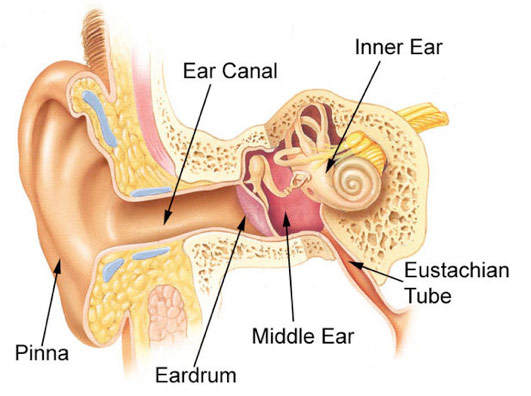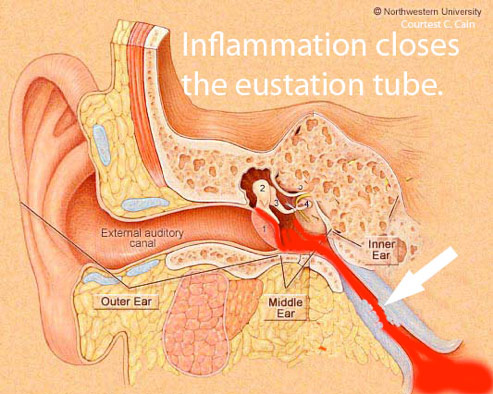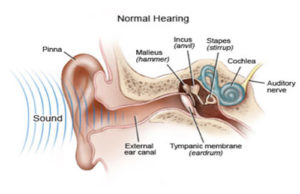 When scuba divers descend into the depths of the water, they may experience a condition commonly called “ear squeeze.” This happens because the pressure in the middle ear and the outside atmosphere differ. The pressure of the outside environment is higher and therefore pushes inwards on the eardrum, which feels like squeezing of the ear. This is a normal phenomenon and does not cause injury unless ear pressure does not equalize. In those cases, the eardrum may rupture and cause severe symptoms, including dizziness, nausea, and vomiting.
When scuba divers descend into the depths of the water, they may experience a condition commonly called “ear squeeze.” This happens because the pressure in the middle ear and the outside atmosphere differ. The pressure of the outside environment is higher and therefore pushes inwards on the eardrum, which feels like squeezing of the ear. This is a normal phenomenon and does not cause injury unless ear pressure does not equalize. In those cases, the eardrum may rupture and cause severe symptoms, including dizziness, nausea, and vomiting.
What happens to my ears when I scuba dive?
As a diver descends deeper into the water, the outside pressure increases, and is higher than the pressure in the diver’s middle ear changes. That pressure continues to build until the Eustachian tubes (the body’s natural pressure release mechanism) open and equalize the pressure.
What are the Eustachian tubes?
The eustachian tubes are small, narrow-sloped canals connecting the middle ear cavity to the nasopharynx (back of the nose). These tubes have three primary functions:
- regulate and ventilate pressure in the middle ear
- protect the middle ear from nasal secretions
- remove secretions from the middle ear into the nose/nasopharynx

This tube will open when pressure in the middle ear gets too high, thereby allowing air to enter the ear and lowering the pressure in the ear. This protects the eardrum from rupturing.
However, due to copious amounts of water that enter the ear canal and cause an increase of pressure in the ear, the eustachian tubes may not open, forcing the eardrum to turn inward, often causing pain and inflammation of the ear drum.
What are the dangers (to my ears) of diving?
When diving, it is important to not ignore “ear squeezing.” That symptom suggests the ears have not yet equalized pressure and that the Eustachian tube has not yet done its job. Divers know how to gently exhale against plugged nostrils to force the Eustachian tube open so that air can enter the ear and equalize the pressure.
However, if divers continue to dive and ignore the pain in their ears, the eardrum may rupture. Cold water enters the middle ear and causes:
- Nausea
- Vomiting
- Dizziness
This is because the structures critical for balance are located near the middle ear and cold water triggers a response in these structures, causing dizziness. Dizziness is severe and will cause nausea and vomiting. This is potentially life-threatening to the underwater diver.
How can I prevent ear injury while diving? Why wouldn’t the Eustachian tubes open?

Any disease of the nose or nasopharynx can prevent the Eustachian tube from opening. This includes anything that can cause nasal inflammation including:
- smoking
- allergies
- nasal polyps
- upper respiratory infection
- previous facial trauma
To prevent barotrauma (“ear squeeze”) or other ear injuries during a dive, divers should:
- Immediately stop their dive if they feel pain in their ears or cannot clear their ears out while on a dive.
- Equalize their ears before and during the descent.
- Not dive if they are suffering from any sinus or upper respiratory infection



